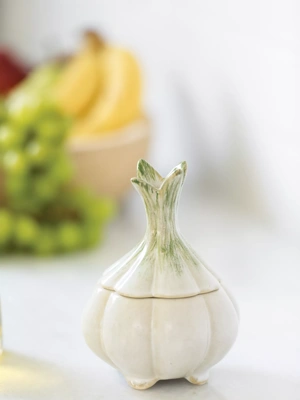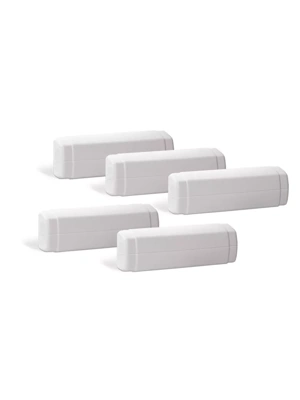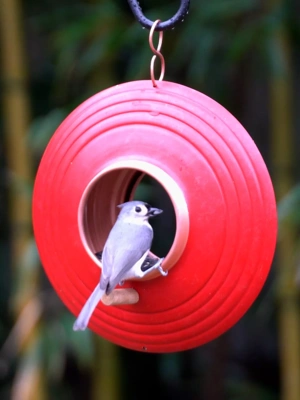How to Get Rid of Fruit Flies

These soapstone covers conceal plastic fruit fly traps.
 On Pinterest? Pin this handy infographic
On Pinterest? Pin this handy infographicFruit flies win the "Most Annoying Pest" contest hands down. They live in the kitchen, crawling around and breeding on food, and then fly into hard-to-swat, in-your-face swarms when disturbed. If that behavior isn't a category winner, I don't want to see the competition!
Fruit fly (Drosophila melanogaster) invasions usually coincide with the ripening of summer fruit. Nothing draws a crowd of fruit flies like a bowl of peaches or tomatoes. So where exactly did they come from? Although it's tempting to think of these pests as alien invaders that hitchhiked from a distant land, it turns out they're natives. They usually live outdoors, though, and only come inside when they detect a potential breeding ground.
Fruit fly adults only live for a few days, so their need to breed is intense. Females lay up to 500 eggs on any fermenting food source, and that includes everything from ripe bananas to garbage disposal slime. Yuck! The presence of fruit flies is often the first tip that you've got a forgotten potato in the cupboard or that your toddler spilled apple juice under the table.
Despite the annoyance factor, fruit flies perform an important public service. Their larvae consume decaying matter that might otherwise turn into a source of fungal or bacterial infection or attract even more obnoxious pests, such as mice or rats. Females lay their eggs just under the surface of decaying fruit and other foods. After hatching, the grubs spend three or four days eating before they mature into breeding adults, and the cycle begins again. Their whole life cycle occurs in about eight days.
 Female fruit flies can lay as many as 500 eggs in fermenting fruit and garbage.
Female fruit flies can lay as many as 500 eggs in fermenting fruit and garbage.Controls and prevention
Getting fruit flies out of the kitchen takes a bit of persistence, but it isn't difficult and doesn't require any pesticides.
- Eliminate or contain their food sources by refrigerating or covering ripening fruit, especially bananas, peaches and tomatoes.
- Cover your kitchen compost, using a container with a fitted lid.
- Search the cupboard for potatoes and onions that are starting to get soft and spoil.
- Mop up spills under the refrigerator
 These lovely glass pears don't look like fruit fly traps, but they are.
These lovely glass pears don't look like fruit fly traps, but they are.- Rinse discarded and recyclable bottles and cans, especially beer and juice containers.
- Keep the garbage disposal clean.
- Follow your nose or fly swarms to discover other infestation sites.
- Set up a fruit fly trap. These consist of an attractant, such as cider vinegar, inside a bottle or container from which the flies can't escape. A cone of paper set above a bit of vinegar in a glass or bottle works for some. I prefer the more aesthetically pleasing Chicken-Shaped Decorative Fruit Fly Trap.
- To prevent future infestations, I keep a trap on my kitchen counter all year.
Last updated: 03/13/2024
Print this Article:
Related items
Get the Dirt
Stay up to date on new articles and advice. Please fill out the information below.












